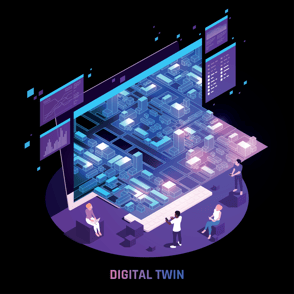
The movement toward 'smart cities' has developed momentum in the past few years as forward-looking city planners recognize that connected devices can provide value and create efficiency that was not possible previously. This will quickly become a driver for the construction of 'smart infrastructure' that collects the data. Of course, it will not only be cities that become 'smart'; states, regions and nations will all need smart infrastructure in order to take full advantage of the potential of connected devices... the Internet of Things (IoT).
This is the second of a 3-part series that discusses how the evolution of technology will affect the infrastructure product manufacturing industry. In the first post we discussed why the construction industry will embrace IoT. In this we discuss the role that smart infrastructure products will play in the future of infrastructure. In the third, we provide our vision for how technology will enable the reinvention of construction manufacturing in response to new, vertically integrated mega-firms.
To date, smart city initiatives have typically involved the use of existing infrastructure:
San Diego, CA replaced 35,000 street lights with controllable LED lights. Last year the city outfitted 3,200 of these lights with sensors to provide data that can be used to analyze traffic patterns.
Columbus, OH won a $40M US Department of Transportation grant in 2016 on the strength of an initiative to connect cars with each other and information devices installed on city infrastructure.
Amsterdam, Netherlands crowd-sourced a network of IoT nodes covering the entire city in 6 weeks.
As more municipalities modify existing infrastructure, it takes no great leap of insight to realize that they will soon want the infrastructure elements they purchase to be IoT-ready. The elements they purchase will need to be equipped to collect data for internal use and to enhance public service.
Data for internal use
The project owner responsible for the bridge being refurbished will want elements that produce data related to the structural health of the bridge and communicate it seamlessly to a maintenance dashboard. Why? While it won't eliminate bridge inspections, it will substantially reduce the estimated $4.6 billion annual cost of inspecting more than 614,000 bridges in the US.
Bridge panels may include strain gauges, accelerometers and corrosion sensors, among others. Our vision for smart infrastructure is a system that looks something like this:
 Infrastructure projects most likely to require IoT-ready elements for internal monitoring will be bridges, tunnels and stormwater systems.
Infrastructure projects most likely to require IoT-ready elements for internal monitoring will be bridges, tunnels and stormwater systems.
Data for public service
The municipalities will make metadata available to the private sector for the purpose of creating technology solutions for the public good. Some existing examples:
New York City's Smart Stormwater Management Project, which seeks to reduce combined sewer outfall (sewage and stormwater) by leveraging citizen participation with stormwater technologies.
The City of Las Vegas has partnered with Cisco Systems to manage traffic congestion and environmental issues with Cisco's Kinetic for Cities IoT platform. If a driver is waiting at a red light at 1:00 a.m., installed sensors can gather carbon dioxide levels and analyze ambient traffic conditions to determine whether it’s safe to turn the traffic light green rather than let the car sit at a red light generating exhaust.
Municipalities are embracing smart city initiatives because they see opportunities to create more value for citizens. It follows, then, that they will want more value from the products they purchase to construct the required infrastructure. Consequently, it will not take long for the precast panel, bridge girder and stormwater system of today to be viewed much like we now view a flip-phone in the age of smart phones. Simply not enough.
Infrastructure product manufacturers will be well served by considering how they can lead the inevitable evolution to smart infrastructure rather than follow. Idencia will be there to help.
If you would like to discuss, please contact us by clicking below. If you will be at The Precast Show, please visit us at booth #590!
About Idencia
Our mission at Idencia is to elevate the productivity of concrete manufacturers. We offer precast RFID tracking solutions that improve productivity and offer value throughout the value chain. As a cloud-hosted product tracking system that is seamless between manufacturers, contractors and asset managers, Idencia adds information value to all, eliminates redundancy and saves time.

Feb 16, 2019 5:32:16 PM





Comments